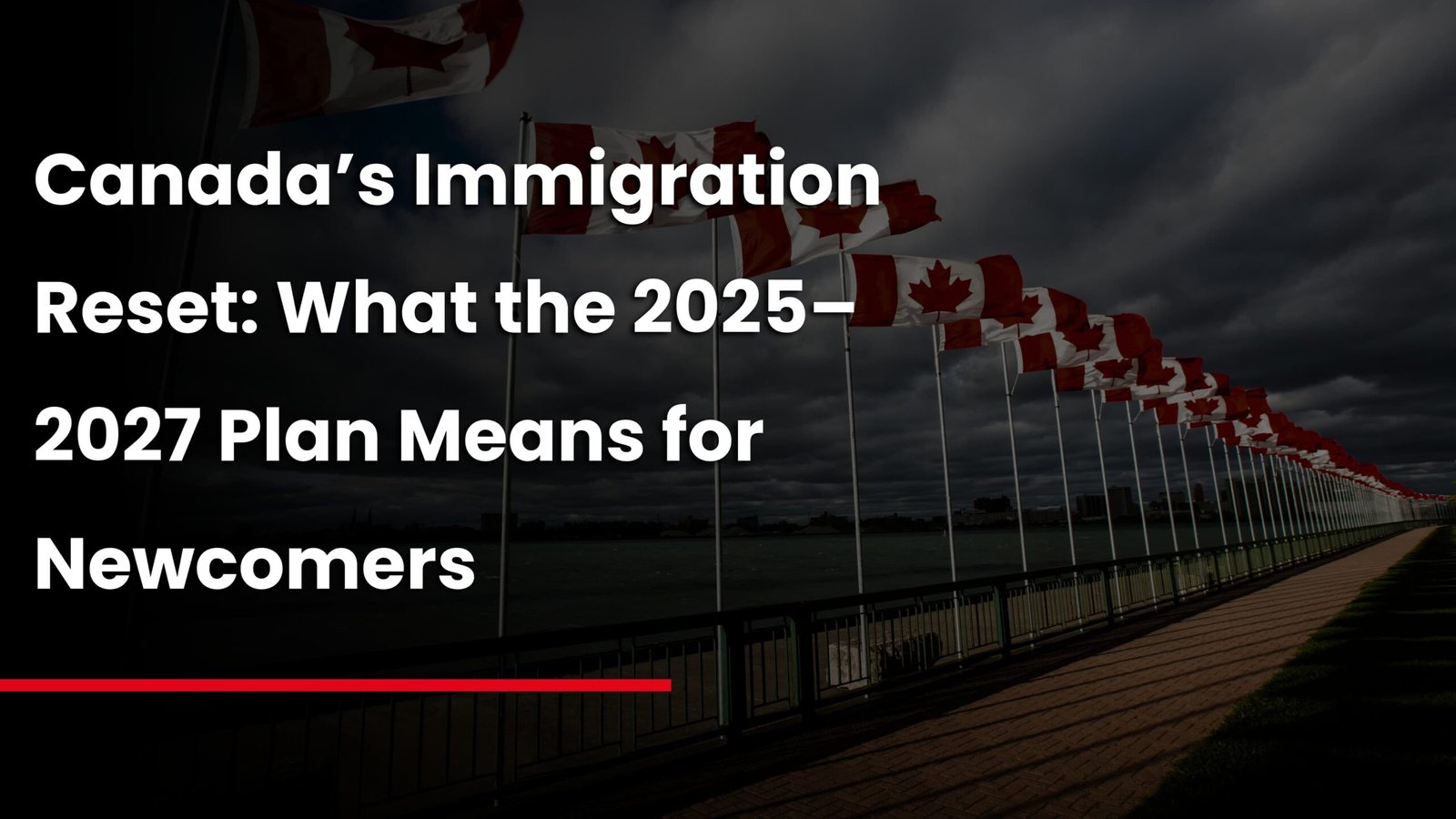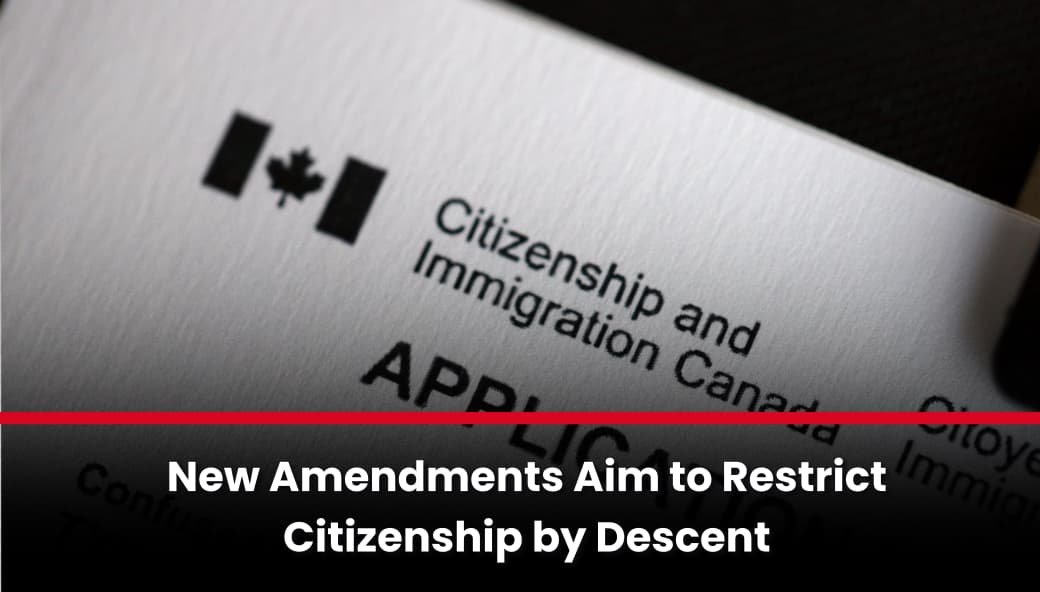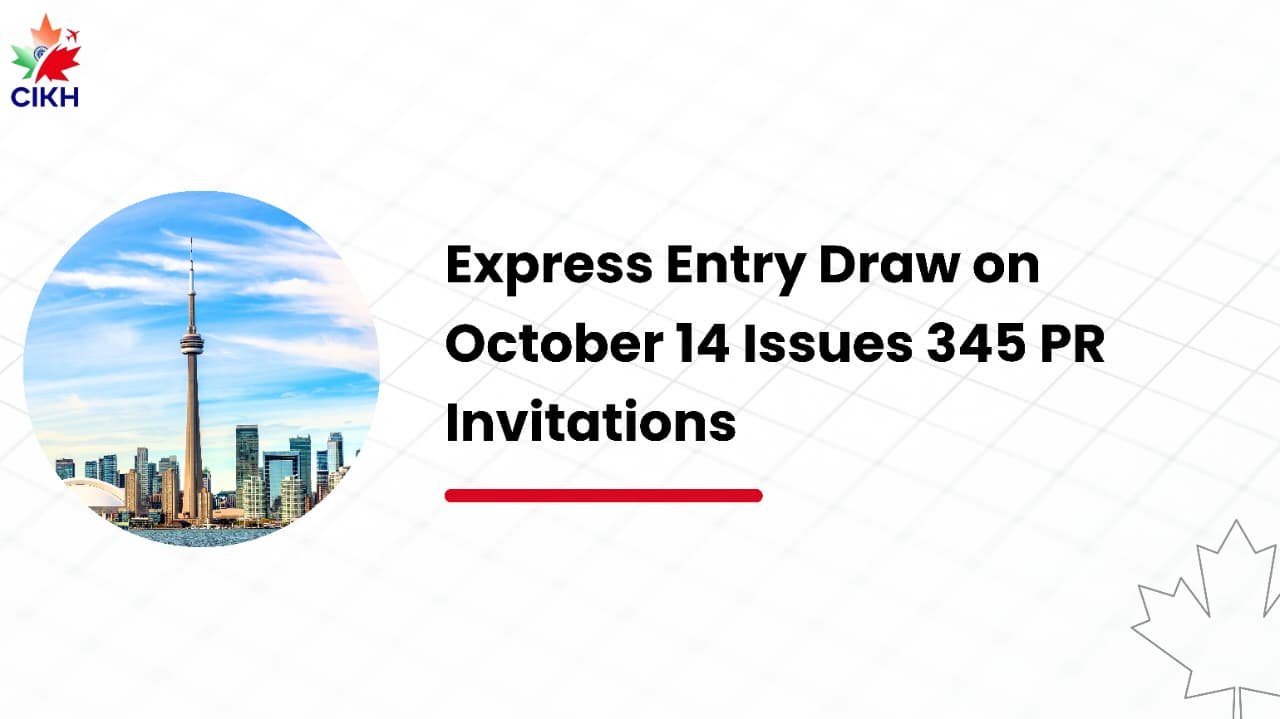Canada has long been known for its generous and inclusive immigration policies, welcoming nearly 500,000 newcomers annually in recent years. However, as housing affordability worsens, healthcare systems strain, and temporary resident populations soar, the federal government has unveiled a major course correction: the 2025–2027 Immigration Levels Plan, which many are calling Canada’s “Immigration Reset.”
Book Your Consultation for Canadian Immigration
This reset doesn’t mean Canada is closing its doors. Instead, it signals a shift toward more sustainable growth, targeted economic priorities, and regional integration. For newcomers, students, and workers eyeing Canada, this new plan presents both opportunities and barriers—depending on how prepared you are.
1. A Shift Toward Stability: Lowering Immigration Targets
In a sharp pivot from previous years, the federal government will gradually reduce permanent resident (PR) admissions over the next three years:
- 2025: 395,000 PRs
- 2026: 380,000 PRs
- 2027: 365,000 PRs
These numbers represent a 20–25% cut from the 2024 high of 485,000. The goal, as stated by Immigration, Refugees and Citizenship Canada (IRCC), is to “pause population growth in the short term” to relieve pressure on the housing market and infrastructure. According to a government departmental plan, these reductions are expected to narrow Canada’s housing shortfall by about 670,000 homes by 2027. This strategy is rooted in data from Statistics Canada and economic forecasts from the Department of Finance, showing that Canada’s population grew by more than 1.2 million people in 2023, primarily due to immigration and temporary residents.
2. Express Entry and Skilled Workers Take Center Stage
One of the most significant changes in the 2025–2027 plan is a shift in focus toward federal economic immigration streams, particularly Express Entry and the Canadian Experience Class (CEC).
Key Allocations:
- Federal High Skilled programs (Express Entry): Over 124,000 in 2025
- Provincial Nominee Program (PNP): Cut nearly in half to ~55,000 per year
- Francophone immigration outside Quebec: Will increase from 8.5% in 2025 to 10% by 2027
The message is clear: If you have work experience in Canada, or in a high-demand skilled sector, your chances are rising. The creation of a Chief International Talent Officer, announced by the government in March 2025, will help align immigration with critical labour shortages in sectors like healthcare, skilled trades, and tech.
3. Temporary Residents: The Era of Caps and Controls
Another headline change is the government’s decision to cap the number of temporary residents—including students and workers—to about 5% of the total population by 2027, down from 7.5% in 2023.
Annual Temporary Resident Intake Targets:
- 2025: 673,650
- 2026: 516,600
- 2027: 543,600
Minister Marc Miller confirmed that these caps are necessary to rebalance the immigration ecosystem, which has become unsustainable. In particular, international students are facing more stringent equirements:
- Proof of financial support now stands at $20,000 CAD, up from $10,000
- Fewer designated learning institutions (DLIs) are eligible
- Post-graduation work permits (PGWPs) are now restricted to graduates in fields of critical importance, such as engineering and healthcare
- The Student Direct Stream (SDS) has been phased out for some regions
This shift is already being felt. According to a May 2025 report by the Globe and Mail, international student permits dropped by 40% compared to 2023, with private colleges hit the hardest.
4. Humanitarian and Family Immigration Still a Priority
Despite the overall cut in numbers, Canada continues to maintain its humanitarian and family reunification commitments. About 24% of all PR slots in 2025 are reserved for spouses, children, and parents/grandparents. Canada also remains a global leader in refugee resettlement, with plans to accept over 58,000 refugees and protected persons in 2025. This reflects Canada’s ongoing commitment to global responsibility while maintaining domestic balance.
5. Real-World Impact: Who Benefits and Who Doesn’t?
Maria’s Story – A Winner Under the New System
Maria, a 26-year-old Indian software engineer, completed her postgraduate diploma at a Toronto college in 2024. She’s now on a PGWP and working in a tech company. Thanks to her Canadian education and in-Canada work experience, she qualifies for the Canadian Experience Class, a stream expected to be prioritized heavily under the Express Entry system.
Ahmed’s Story – Left Waiting Abroad
Ahmed, a 35-year-old mechanical engineer in Dubai, applied under Alberta’s Provincial Nominee Program (PNP) in late 2023. Under the new plan, Alberta’s PNP quota is significantly reduced, and more of it is reserved for in-Canada applicants. Ahmed now faces longer processing times and uncertainty. These real-world examples highlight the emerging divide: Canada-first strategies are favouring those already inside the country.
6. Why This Reset Matters for Canada’s Future
Economic Impact
According to Bank of Canada Governor Tiff Macklem, lowering immigration may reduce overall GDP growth, but could increase per-capita income by easing pressure on public services and wages. It’s a tradeoff between headline numbers and quality of integration.
Housing and Social Services
RBC Economics and Scotiabank have both warned that uncontrolled immigration growth without infrastructure support could lead to “permanent housing unaffordability.” The reset addresses this directly by realigning immigration with actual provincial and municipal capacity.
International Ripple Effect
Australia and the UK are watching Canada closely. The Wall Street Journal recently cited Canada’s immigration reset as a “model for recalibrating growth without closing doors,” especially amid global migration pressures.
Final Thoughts: What Should Newcomers Do?
While the door to Canada remains open, the path is narrower and more selective. Here’s what you can do:
1. Get Canadian experience—Study or work in Canada through legitimate, in-demand programs.
2. Focus on essential sectors—Tech, healthcare, trades, and French-language positions are prioritized.
3. Get your documents in order early—Credential recognition and proof of funds matter more now than ever.
4. Stay updated—Policies are evolving fast. Consult licensed immigration professionals or follow IRCC updates regularly.
Conclusion
Canada’s 2025–2027 Immigration Reset marks a shift from rapid expansion toward managed growth—lower overall numbers, tighter temporary resident control, and a reinforced focus on skilled, in Canada integration. While fewer slots are available, skilled newcomers with Canadian work or study experience remain in a strong position. This era encourages strategic planning by prospective immigrants and highlights the importance of adaptability in shifting policy landscapes.
Let us know if you’d like to explore pathway options tailored to your background or how these changes play out provincially!
Sources:
- Immigration, Refugees and Citizenship Canada (IRCC), 2025–2027 Levels Plan
- Department of Finance Canada – Economic Outlook 2025
- Bank of Canada – Monetary Policy Report, April 2025
- Globe and Mail – May 2025 Student Permits Report
- Wall Street Journal – Canada’s Housing and Immigration Strategy Feature, March 2025
- Statistics Canada – Population Growth Reports Q1 2025





